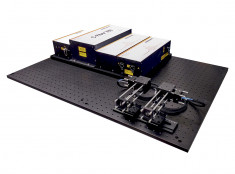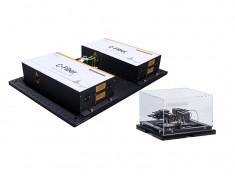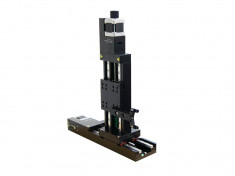ImageLab
Hyperspectral Image Processing Software for THz Imaging Data

Specifications
Advanced Features and Benefits:
- One-of-a-kind image processing tool
- Based on statistical methods
- Analysis of THz and other spectroscopic image data
- Flexible data import
- Pre-processing, analysis, visualization, and highlighting of information
| Basic Edition | Extended Edition | Database Edition (coming soon) |
| Detection of suspicious pixels | 4D data model | User-definable spectral databases |
| Image stack | 64-bit architecture | Support of third-party databases |
| Basic set of mathematical methods | Multi-sensor support | Library search |
| Vertex component analysis | ImageLab script automation | |
| Principal component analysis | KNN classifiers | |
| Cluster analysis | Random forest classifiers | |
| PLS discriminant analysis | Multiprocessing support | |
| Similarity maps | ||
| Baseline correction | ||
| Spectral descriptors | ||
| 3D image display | ||
| Maximum noise fraction transform |
Description
ImageLab is a one-of-a-kind image processing tool for the analysis of data from various spectroscopic imaging techniques such as THz, optical, UV/VIS, IR, Raman, or mass spectrometry. Based on multivariate statistical methods it enables the user to analyze and classify acquired hyperspectral images, to merge them with maps of physical properties and to overlay them with conventional high-resolution color photos. A chemometrics toolbox, visualization of the image data and highlighting of analytical information round up the software package to an indispensable instrument for in-depth analysis of spectroscopic image data.
ImageLab is now part of Menlo Systems’ imaging extension TERA Image. Ask us for possibilities to upgrade your THz imaging system with our unique software tool!
FREE trial license available here.
Antenna and chip structure in a key card
Photo and transmitted THz signal distribution, selected for the spectral range of 1.5 – 2.5 THz:
The microchip, antenna windings, and the wiring are visible due to the increased image resolution of the high-frequency range.

K-means cluster analysis ClassMap (k = 8):
The k-means algorithm breaks down the input data set into k partitions (culsters). The picture below shows an automatic analysis of the 0.7-2.1 THz region. Due to different diffraction of linearly polarized THz radiation the vertically and horizontally oriented structures of the antenna induce different spectral properties. The different material components of the key card such as plastic, semiconductor chip, or metal are clearly recognized.

Identification of biomolecules
Photo of a sample consisting of three different biomolecules, α-lactose, L-tyrosine, L-glutamine, and transmitted THz signal distribution, filtered for the range of 1.5 - 2 THz:
Despite comparable thickness of each layer, the different sample regions exhibit different transmission intensity.

K-means cluster analysis (k = 4):
The algorithm uses the significant spectral components of the three substances for their identification and maps their occurrence within the mixture.


-
Dr. Milan Öri
Your direct line to our expert
Data sheets
Product literature
Ordering information
- Product Code
- ImageLab
Headquarters
sales@menlosystems.com
+49 89 189166 0
Menlo Systems, Inc.
ussales@menlosystems.com
+1 973 300 4490




